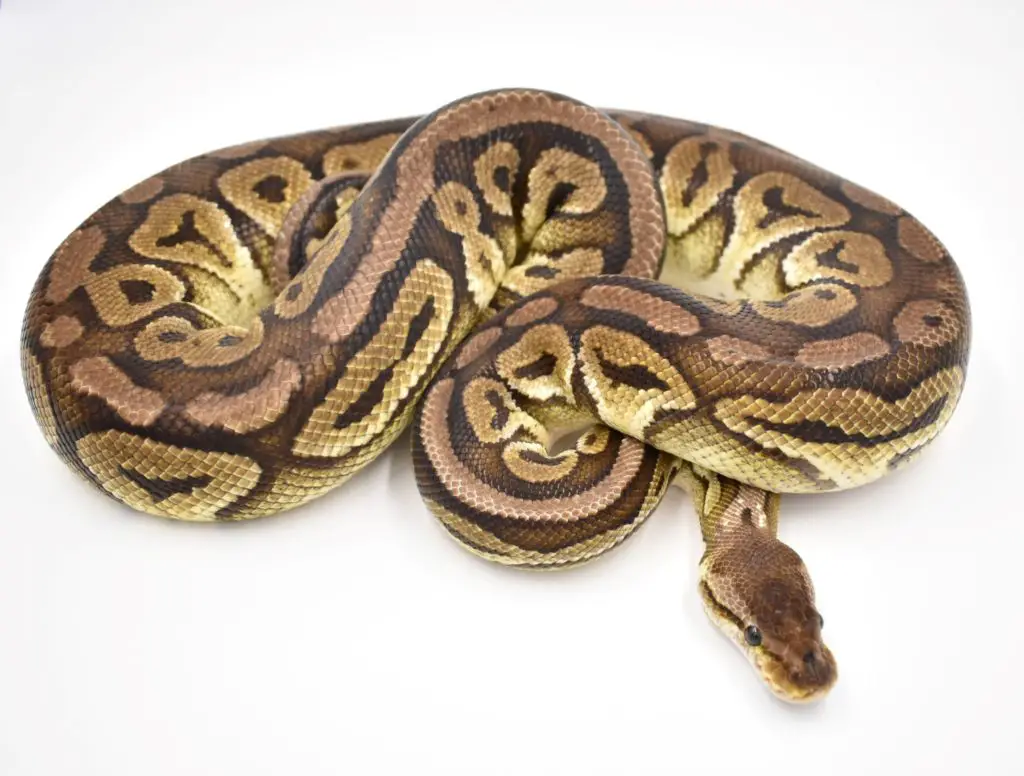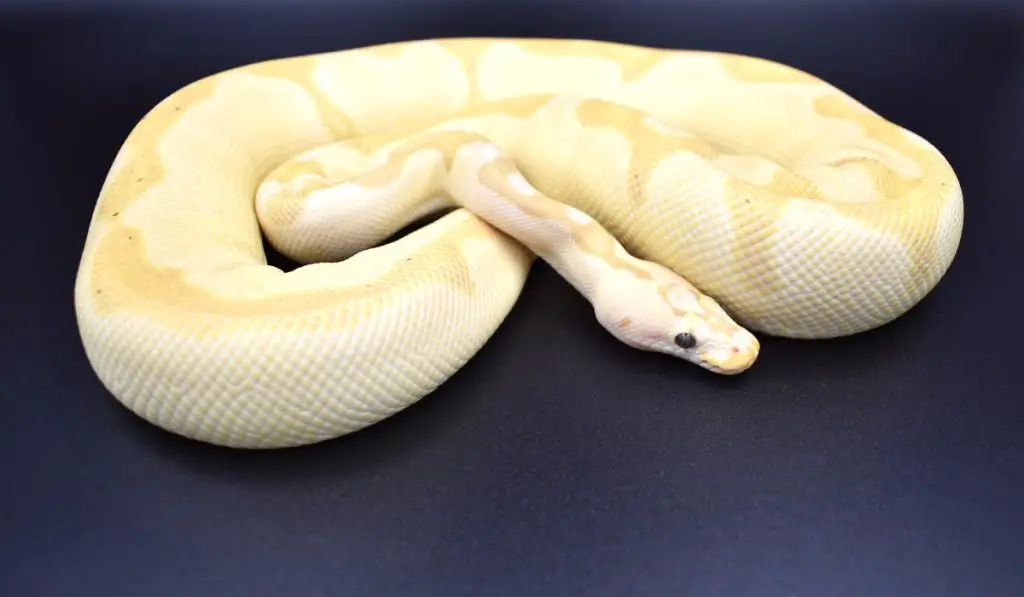Polygenic Ball Python morphs are those that combine more than one gene to create an appearance that would otherwise be unseen. Some of the coolest and most unusual morphs of all time fall into this category, from the Lemonblast to the the good-old Bumblebee.
In this post, we’ll take a look at what makes polygenic morphs special and how to breed them, before providing you with some in-depth polygenic morph guides.
What does polygenic mean in snakes?
Polygenic simply means containing or influenced by more than one gene. In Ball Python morphs, polygenic means exactly the same thing as “combination morphs”.
For example, a Pewter Ball Python is a combination of two genes: Pastel and Cinnamon. Both of these genes are incomplete dominant (aka co-dom), but you can make polygenic morphs out of recessive and dominant genes too.
The main reason for creating polygenic morphs is because when two or more genes are present, they often have a greater effect on color and pattern than you might expect. Just check out the Pewter in the photo below. It’s pretty surprising that Cinnamon and Pastel can do that!

Some of the coolest Ball Python morphs
If you get into this hobby, you’ll quickly notice that most of the coolest Ball Python morphs are polygenic. Some of them look nothing like the parent snakes, and new combinations sometimes even surprise the breeders themselves.
Let’s take a quick look at a couple of examples…
Example 1: Albino Pinstripe Ball Python
This morph combines the recessive gene Albino and the dominant gene Pinstripe. As you can see, the results are better than you might have guessed. Instead of a light yellow snake (which is what I would have expected), you get a dark orange animal.
What has happened is that the strong effect on pattern that the Pinstripe gene exerts has managed to shine through the albino gene.

Example 2: Coral Glow Leopard Pastel Clown
This combination morph involves the recessive gene Clown, the incomplete dominant gene Coral Glow, the incomplete dominant gene Pastel, and the dominant gene Leopard.
What you get is a beautiful yellow coloration and greatly reduced pattern. Where the pattern has remained, it’s only present in little blotches of purple-ish color. As you can see, it looks nothing like a snake carrying only one of the genes involved.

Considerations when breeding polygenic morphs
When breeding polygenic morphs, or trying to create polygenic morphs, there’s a few simple things to remember:
- Some genes are “enhancers” or brightening genes. Examples include Enchi, Fire, and Yellowbelly. Use these if you want to add contrast, brightness and color. For the most part they increase yellow coloration, but Enchi can actually give a red hue to some combinations.
- Other genes have a darkening effect. Examples include Cinnamon, Black Pastel, Mahogany, and Blackhead. Most of these will add contrast when combined with very bright genes (like Black Pastel + Albino or Cinnamon + Coral Glow). Some of them, will also create striping, however, as in the case of Cinnamon + Bongo.
- Yet other genes can completely change the color and/or pattern. Examples include Coral Glow/Banana, Champagne, Leopard, Acid/Static/Confusion, and Genetic Stripe. You can use Acid/Confusion in practically any combination morph, because they busy up the pattern and look amazing. Champagne on the other hand can be overpowering, and may be at its best in simple combos.

Problems when breeding polygenic morphs
KIS is a term regularly thrown around the scientific community, and it means: KEEP IT SIMPLE. My teachers probably didn’t have Ball Python breeding in mind when they drilled that phrase into my head, but it’s certainly a good mantra for this hobby.
What I’m getting at is the fact that if you add too many genes to a breeding project, you will make things too complicated. This usually results in a “gray out” or “brown out” – baby snakes that are one solid color, and leave you with no clue whatsoever as to what morphs they contain.
This doesn’t make selling them easy, or even using them for future projects. My advice is to avoid going past a total of four genes in a pairing, unless someone else has already done it with good results.
It’s also worth remembering that some genes don’t mix with each other or related genes, leading to infertile eggs or embryo death. One example is Spider. If both parents have the Spider gene, any embryo that has two copies of the gene will die before hatching.
More on polygenic Ball Python morphs:
- Pewter Ball Python breeder’s guide
- Lemon Blast Ball Python breeder’s guide
- Firefly Ball Python guide and advice
Ball Python Morph Topics:
- Overview
- Morphs from Recessive Mutations
- Single Gene Morphs
- Multi-gene Ball Python Morphs *You are here
- Popular Ball Python Morphs
